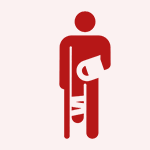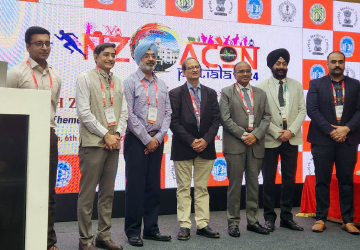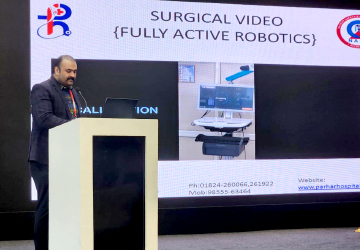

PARHAR HOSPITAL
Robotic Surgery & Complex Trauma Centre
Parhar Hospital Phagwara, has now become the First Fully Automatic Robotic Surgery Centre of Punjab.
Punjab's First Fully Active
Real Joint Robot
Parhar Hospital ushers in a Transformation in Punjab with the First Fully Active Joint Replacement Robot. The CUVIS Fully Active Robotic Joint Replacement system is a first-of-its-kind robot, which conducts the cutting and milling too under the supervision of an experienced surgeon. This technology immeasurably enhances the replacement procedure by providing maximum accuracy and the option of mid-course correction due to constant feedback, to provide the best possible results in Joint Replacements.
What is Robotic Knee Replacement?
In joint replacement surgery, the arthritic portion of the knee is removed and replaced by an artificial joint that form the new surfaces of the knee joint. During Cuvis Joint Robot total knee replacement, surgeons use computed tomography (CT) scans to build a 3D model of the patient's knee. With that virtual model as guide, the surgeon then uses the robotic arm to make accurate bone cuts and insert the knee components precisely.
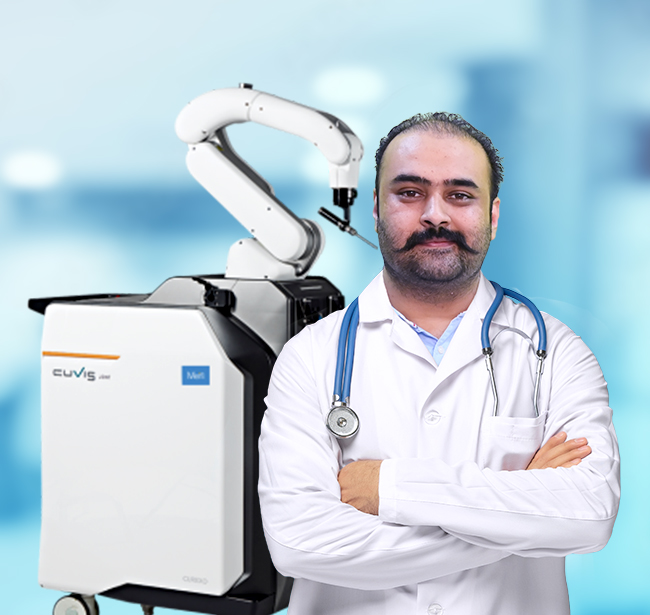
Why Robotic Knee Surgery?
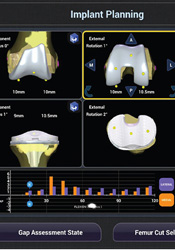
As each person has a diffrent face,the shape of bone is also diffrent. Meril's artificial joint surgical joint robot CUVIS joint shows the patient's bone in 3D images and the doctor can use those images for pre-planning of surgery Personalized for the patient.

What's as important as the precise surgical plan is to select and insert the personalized artificial joint. the doctor uses robot to select an artificial joint for the patient and insert it accurately.

CUVIS Joint reduces side effects like inequality of limb length, pulmonary embolism and fracture. The risk of infection also reduced because of fewer instruments use than in conventional surgery.

Precise cutting serves the optimum result. CUVIS joint provides the correct alignment of a patient's leg axis with the submillimeter dimensional accuracy and precise cutting for the optimal surgical outcome.
CUVIS Joint Knee Replacement Process
Step-1 Patient's can decide upon robotic joint artificial surgery after consulting with a doctor.
Step-2 CT Scanning.
Step-3 The scanned CT image is converted into a 3D image for diagnosing the patient's condition and make a surgical plan as required.
Step-4 The patient is connected to the robot and stabilized for surgery.In the next stage, the doctor performs registration process to verify if the 3D image of the patient matches the original surgery site.After registration process robot reviews the data and cuts the bone precisely with respect to size,position,angle and direction of the implant decided during pre-surgery planning stage.
Stage-5 Insert and Fix the decided implant for surgery conclusion.
Treatments
Team Members!

Dr. Amrik Singh Parhar
- M.B.B.S
- M.S (ORTHOPAEDICS)
- CHIEF TRAUMA SURGEON

Dr. Rohan Singh Parhar
- M.B.B.S DNB (Orthopaedic)
- MNAMS Arthroplasty And Trauma Surgeon

Dr. Parul Arora Parhar
- M.B.B.S DNB (OBSTETRICS AND GYNAECOLOGY)
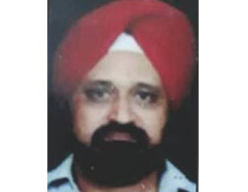
Dr. I.V.S Sirohi
- M.B.B.S
- D.A
- M.D (ANAESTHESIC)
Patient Testimonials
FAQ'S
An actual surgical procedure usually takes approximately 50 minutes to 1 hour. However, preoperative preparation time required by an anesthesiologist to prepare you for the surgery and certain procedures after surgery will make you stay in the operation room for about two-to two-and-half hour.
There might be chances for you to avoid knee replacement surgery. There are things that you can do to avoid going through surgery. You must maintain proper weight so that your joints do not have to go through pressure. You must exercise regularly. Some injections might also help you get through the knee pain. You can use an unloader brace that shifts the stress to the other side and reduces the pain in the knee. You can also use medications and supplements under the proper supervision of a doctor.
Couples are generally advised to seek medical help if they are unable to achieve pregnancy after a year of unprotected intercourse.
Surgery is performed when the injury is severe, like repairing torn tendons or ligaments and when the joint dislocation causes deformity and disability. However, most sports injuries in the shoulder do not require surgery.
A: Possible complications of fracture include Malunion i.e. the fracture heals in the wrong position. Sometimes the normal development of that bone may be affected, thus raising the risk of a subsequent deformity. Bone or bone marrow infection (osteomyelitis). Bone death (avascular necrosis) — if the bone loses its blood supply, it may die.
- When patient has pain every day
- Need for pain medication on a daily basis
- Pain at night preventing patient to sleep
- Pain during outdoor activities/ work
- If knees develop deformities and look crooked/bend
- It’s natural to feel nervous, but try to be at ease and feel comfortable.
- Prepare the questions you would like to ask.
- Gather medical information about your family.
- Don’t be embarrassed to discuss your personal information.
Depending on the type of surgery you have, you may feel better almost immediately. Or, it could take months before you have complete relief.
The speed of your recovery depends on the:
- Type of your surgery
- Surgeon’s approach to your spine
- Amount of damage to your spine.
- Talk to your doctor about realistic expectations for recovery.












